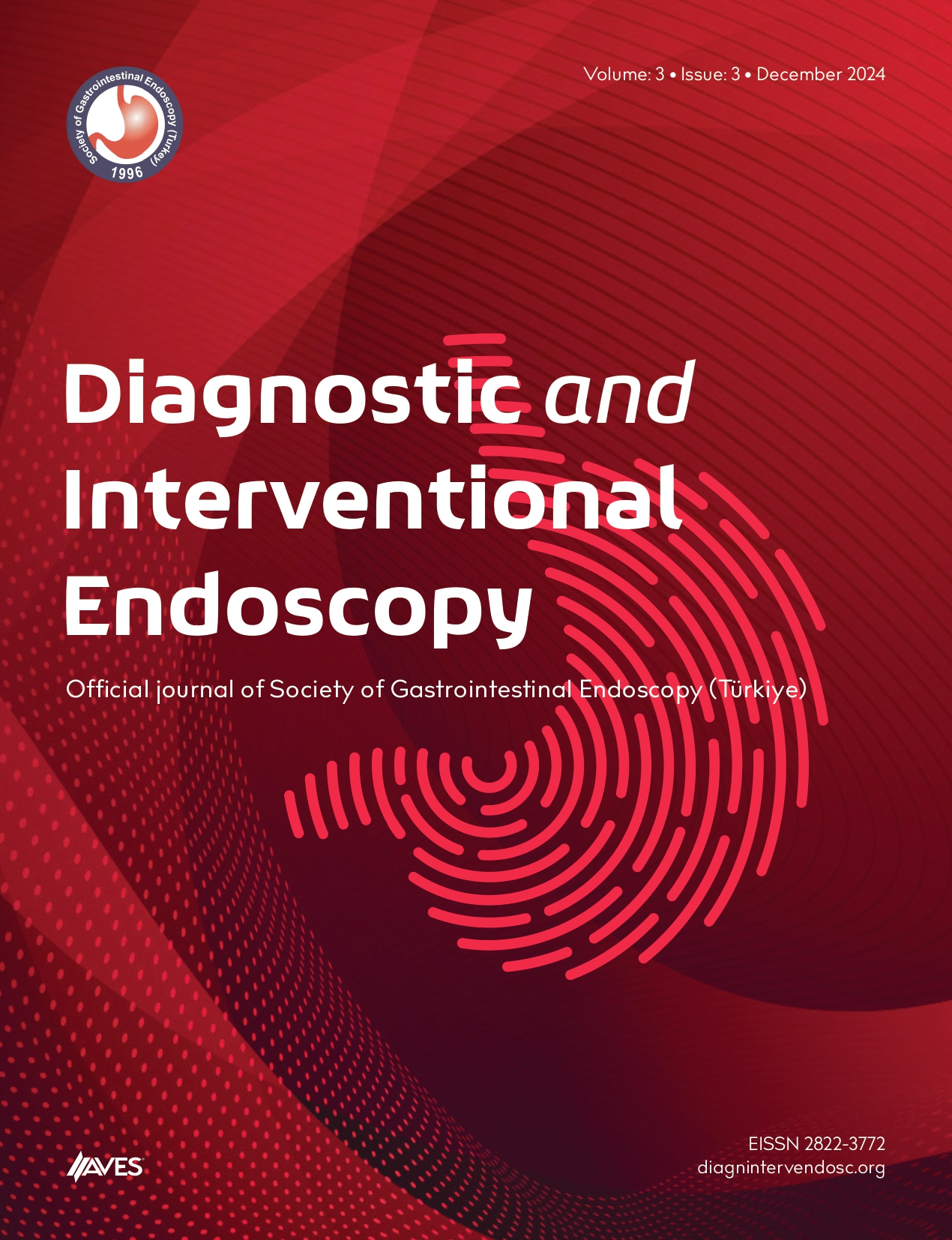Objective: This study aimed to assess the diagnostic adequacy and accuracy of endoscopic ultrasound-guided fine-needle biopsy and fine-needle aspiration procedures.
Methods: The data of patients who underwent combined endoscopic ultrasound-guided fine-needle aspiration and endoscopic ultrasound-guided fine-needle biopsy between July 2018 and January 2022 due to mediastinal or abdominal solid mass were retrospectively analyzed. The primary endpoint for diagnostic accuracy was the malignant or benign outcome and classification according to the Bethesda nomenclature system.
Results: A total of 42 patients who underwent fine-needle aspiration and fine-needle biopsy in the same session were enrolled. It was found that the samples were taken diagnostically sufficient in 95% (40/42) of the patients with endoscopic ultrasound-guided fine-needle aspiration, and 64.3% (27/42) of that yielded the correct diagnosis. Diagnostic adequacy was observed in 71.4% (30/42) of the patients with endoscopic ultrasound-guided fine-needle biopsy, and diagnostic accuracy was found to be 52.4% (22/42). A statistically significant difference was observed between 3 pass endoscopic ultrasound-guided fine-needle aspiration and 1 pass endoscopic ultrasound-guided fine-needle biopsy regarding diagnostic adequacy (P = .003); no significant difference was observed between the 2 procedures regarding diagnostic accuracy (P = .268). The diagnostic adequacy and accuracy rates between endoscopic ultrasound-guided fine-needle aspiration and endoscopic ultrasound-guided fine-needle biopsy for each pass were statistically similar, P = .617 and P = .230, respectively. For lymphadenopathy or solid pancreatic masses, the diagnostic accuracy of endoscopic ultrasound-guided fine-needle aspiration and endoscopic ultrasound-guided fine-needle biopsy was statistically similar, P = .219 and P = 1.00, respectively. In lesions smaller than 30 mm and larger than 30 mm, the diagnostic accuracy of endoscopic ultrasoundguided fine-needle aspiration and endoscopic ultrasound-guided fine-needle biopsy, respectively, was found to be statistically similar (P = .063, P = 1).
Conclusion: Our center's overall diagnostic results for media stina l-abd omina l lymphadenopathy and pancreatic solid mass lesions were comparable and safe for fine-needle aspiration and fine-needle biopsy procedures.
Cite this article as: Gök Sargın Z, Açıkgöz G, Üstündağ Y. Endoscopic ultrasound-guided tissue acquisition of media stina l-abd omina l lymph nodes and pancreatic mass lesions: A comparative study of fine-needle aspiration and fine-needle biopsy. Diagn Interv Endosc. 2022;1(2):44-47.

.png)


.png)